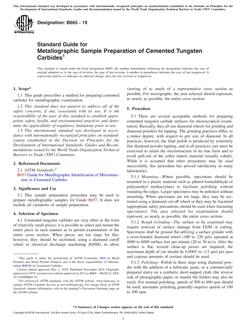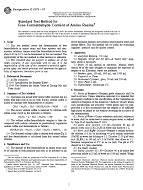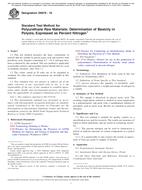1.1 This test method covers the determination of the density, relative density, and API Gravity of petroleum distillates and viscous oils that can be handled in a normal fashion as liquids at the temperature of test, utilizing either manual or automated sample injection equipment. Its application is restricted to liquids with total vapor pressures (see Test Method D5191) typically below 100 kPa and viscosities (see Test Method D445 or D7042) typically below about 15 000 mm²/s at the temperature of test. The total vapor pressure limitation however can be extended to >100 kPa provided that it is first ascertained that no bubbles form in the U-shaped, oscillating tube, which can affect the density determination. Some examples of products that may be tested by this procedure include: gasoline and gasoline-oxygenate blends, diesel, jet, basestocks, waxes, and lubricating oils.
1.1.1 Waxes were not included in the 1999 interlaboratory study (ILS) sample set that was used to determine the current precision statements of the method, since all samples evaluated at the time were analyzed at a test temperature of 15ºC. Wax samples require a temperature cell operated at elevated temperatures necessary to ensure a liquid test specimen is introduced for analysis. Consult instrument manufacturer instructions for appropriate guidance and precautions when attempting to analyze wax sample types. Refer to the Precision and Bias section of the method and Note 6 for more detailed information about the 1999 ILS that was conducted.
1.2 In cases of dispute, the referee method is the one where samples are introduced manually as in 6.3 or 6.4, as appropriate for sample type.
1.3 This test method should not be applied to samples so dark in color that the absence of air bubbles in the sample cell cannot be established with certainty. For the determination of density in crude oil samples use Test Method D5002.
1.4 The values stated in SI units are regarded as the standard, unless stated otherwise, such as the “torr“ units of pressure in Eq 1. The accepted units of measure for density are grams per millilitre (g/mL) or kilograms per cubic metre (kg/m³).
1.5 This standard does not purport to address all of the safety concerns, if any, associated with its use. It is the responsibility of the user of this standard to establish appropriate safety and health practices and determine the applicability of regulatory limitations prior to use. For specific hazard statements, see 7.4, 7.5, and 10.3.
Product Details
- Published:
- 07/01/2009
- Number of Pages:
- 8
- File Size:
- 1 file , 120 KB
- Redline File Size:
- 2 files , 230 KB


